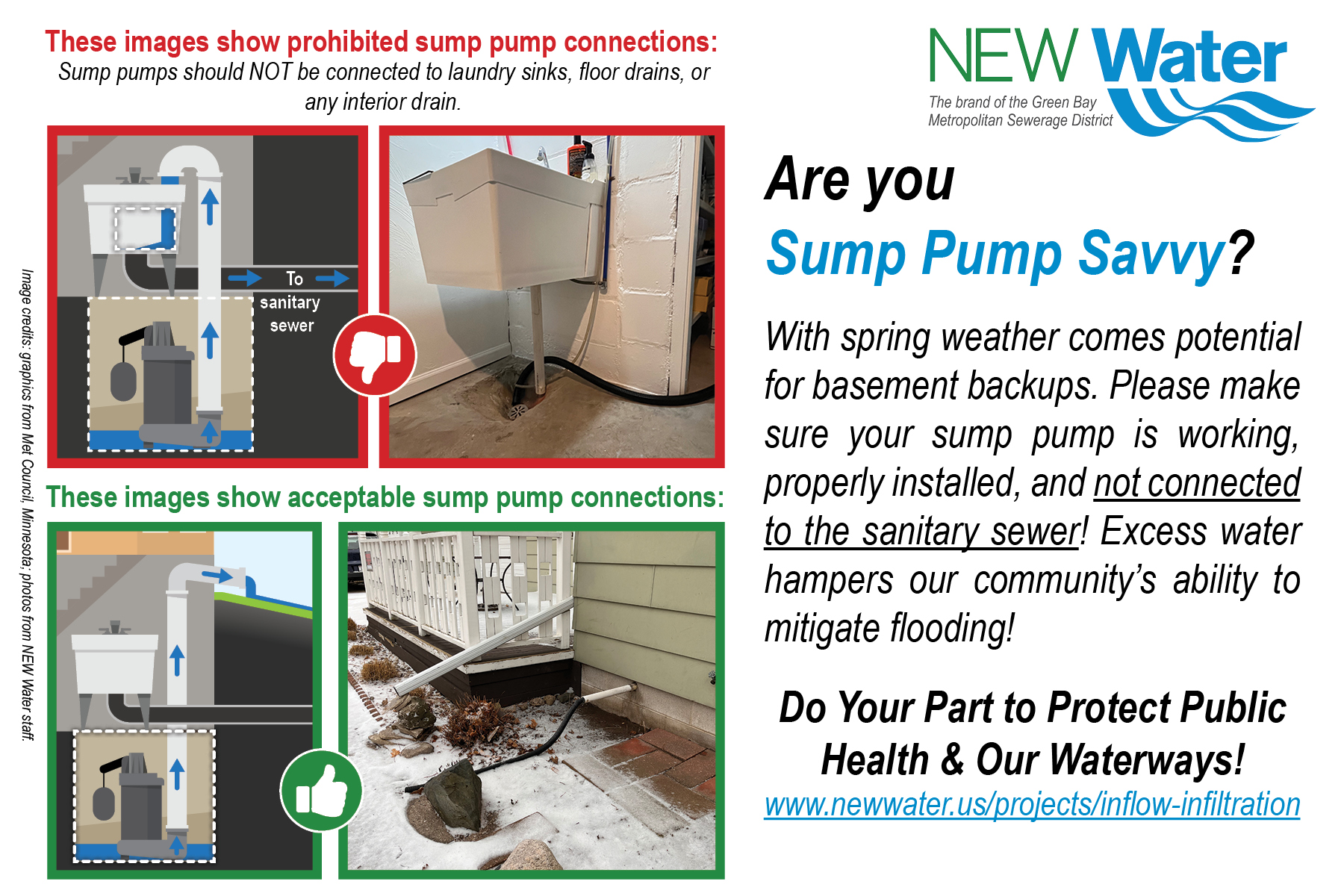Sump Pumps
As temperatures begin to rise in the Spring, the snow begins to melt and the rain begins to fall, residents need to consider how to prevent this water from ending up in their homes. The most common method is to have a sump pump and City locations that do not have one currently, will soon be required to have one installed.
Benefits of having a sump pump installed:
- Prevents basement flooding
- Helps protect from sewage backups
- Protects your home from mold and mildew
- Reduces humidity in your home
- Increases indoor air quality
- Increases property values
Types of Sump Pumps
- Pedestal Sump Pump. A pedestal sump pump has their motor next to this sump basin. If your sump pit is narrow or deep, or you don’t spend much time in your basement, a pedestal pump will be most effective. However, the sound of a pedestal pump running is fairly loud, and these pumps aren’t very powerful.
- Submersible Sump Pump. A submersible sump pump has the motor and its housing located inside the hole. Submersible pumps are quieter and more powerful so if you spend time in your basement or need to pump out a lot of water, those are preferable. Most pumps run between 1/3 hp and 3/4 hp.
- Battery-Operated Sump Pump. A battery backup sump pump will provide you with an extra layer of security in case your power goes out during a flood. It has a float switch that operates when the main source, like electricity or gas lines are cut off from their supplier due to storms.
- Water-Powered Sump Pump. The advantage of a water-powered system is that it has no need to monitor or replace batteries. This type of sump clears the water in your basin through increased water pressure. Since it uses extra water, it can significantly raise your water bill. The City of De Pere is researching if this option has been approved by the state for installation.
Sump Pump Installation Program

